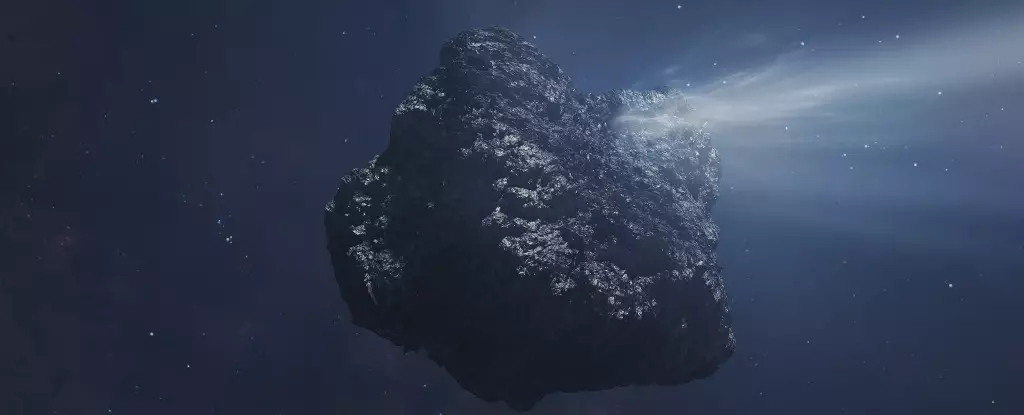A titanic visitor is approaching our celestial neighborhood: Comet C/2014 UN271, also referred to as Bernardinelli-Bernstein, is making its way towards the inner Solar System, and the astronomical community is buzzing with excitement and apprehension. Measuring an astonishing 137 kilometers (85 miles) in diameter, this behemoth is a stark reminder of the vastness of the cosmos and our fragile place within it. Comparatively, it dwarfs the infamous asteroid that led to the catastrophic extinction of the dinosaurs, which measured a mere fraction of its size. The very thought of such a gargantuan object hurtling toward us is harrowing. As it inches closer, the scientific community is not just peering into the unknown; they are thrust into existential contemplation about what this may mean for our planet.
A Glimpse into the Comet’s Heart
The excitement triggered by Comet UN271 is fueled further by recent observations made using the Atacama Large Millimeter/submillimeter Array (ALMA) in Chile. This sophisticated array has captured breathtaking evidence of carbon monoxide outbursts from the comet’s nucleus, hinting at the volatile and dynamic processes that govern it. Described by astrochemist Nathan Roth from American University and NASA Goddard Space Flight Center as an “enormous icy world,” these observations reveal explosive outgassing phenomena that compel us to consider the broader implications of such cosmic entities. Each jet, composed mainly of carbon monoxide, raises myriad questions around the composition of celestial bodies. What secrets lie inside this monument of ice and dust? How do these factors influence the comet’s trajectory—and will they affect us here on Earth?
A Dance of Observation and Prediction
As of now, astronomers observe the comet with both curiosity and caution. They documented a pair of gas jets emerging from UN271, a phenomenon that showcases a comet’s inherent physical processes. In a later observation, the number of jets diminished—an intriguing twist in the comet’s behavior that raises questions about its stability and activity patterns. The narrative here is not simply about a comet; it is about a cosmic ballet, where each move connects researchers with the unfolding dramas of the universe. The idea that scientists are watching this spectacle while located 16 times the distance between Earth and the Sun speaks volumes about the vastness of the universe and our somewhat thrilling yet mundane existence within it.
The Double-Edged Sword of Cosmic Awe
However, with awe comes a sense of vulnerability. The prospect of a comet that deep into the Oort Cloud presenting itself so powerfully leads one to reflect on humanity’s insignificance in the grand scheme of cosmic events. We are often lulled into a false sense of security by the stability of our lives, but events in space remind us that permanence is merely an illusion. While astronomers reassure us that Comet UN271 will not cause any harm, it serves as a poignant reminder that we are at the mercy of forces far beyond our comprehension.
Moreover, the comet’s journey is neither random nor without impact. As it travels toward its closest approach on January 29, 2031, there will likely be increased interest from astronomers and enthusiasts alike in documenting its progress and behaviors. Yet, it also begs the question: What happens when the next celestial body enters our Solar System not as a benign spectacle but as a potential threat?
Following the Cosmic Trail
Despite its immense size, the fate of Comet UN271 is far from certain. Our understanding of such bodies is ever-evolving, informed by both awe and trepidation. As it draws nearer, it is essential that we remain vigilant, using every observation as an opportunity to deepen our understanding of the cosmos and our role within it. This is not merely about charting the paths of comets; it reflects broader human curiosity and the quest for knowledge about our universe.
In the end, Comet C/2014 UN271 represents far more than a scientific curiosity. It embodies our struggle to comprehend the unfathomable and urges us to recognize our connections—even as we negotiate the unpredictability of the cosmos. As we stand at the precipice of this cosmic encounter, we must ask ourselves: Are we ready to confront the known and the unknown, or will we let the wonders of the universe slip quietly by?


Leave a Reply